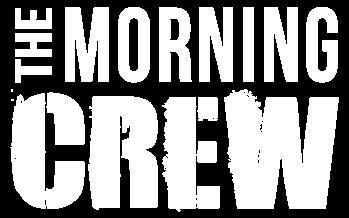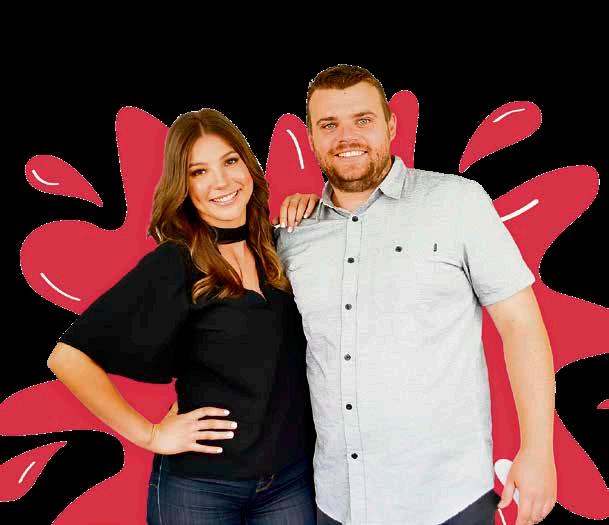
















































































































rganisers of the fourth Wimmera Autumn Merino Sheep Show at Maydale Pavilion are hailing the event a success.
Horsham Agricultural Society’s chief fleece steward Ian Walter said about 140 stud sheep were on show at the event.
“The comments were favourable. We had 40 entries in the fleece section of the show,” he said.
“We had eight entrants in the junior judging competition.
“This is the fourth Wimmera Autumn Merino Sheep Show hosted in Horsham and it was another successful event.”
Robert Harding of Glendonald Stud, Nhill, won the Tom Harmsworth perpetual trophy for supreme fleece of show and most valuable ram fleece.
Alan and Judy Hutchinson won the Austin Eagle champion commercial fleece of show, most valuable commercial fleece, champion weaner fleece and the aggregate.
Melrose Merino Stud won most valuable ewe fleece.
John Dalla of Orrie Cowie Merino Stud, Eyre Peninsula, won the supreme sheep of show with his ram.
Horsham Agricultural Society secretary Andrea Cross said it was lovely to see young people involved in the event.
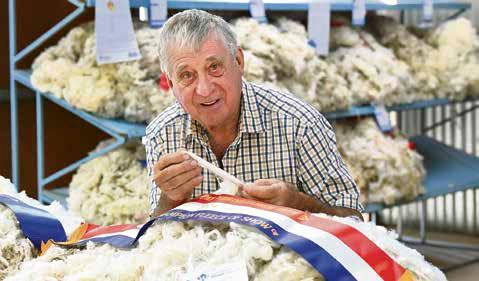
“In our junior judging each year we see young people come through and some return in the competition, as Ava Harris won again this year, but also we see them potentially judging in future years,” she said.
“The junior judging is a growing element of the event, which is encouraging to see.
“We also had a contingent from Longerenong College as stewards and participants and it’s great we can keep the relationship with our local agriculture college going.”
Mrs Cross said the enthusiasm from young people at the show was like a breath of fresh air.
“It’s encouraging to see there are some who are keen to join the Hor-
sham Agricultural Society and we’re now looking at a potential new sheep section in the September show,” she said.
“I have come away from this event feeling hopeful for the future in terms of the livestock industry at show level in our community.
“We start setting up a week before the show and there’s hard work put in by our volunteers, ably led by our chief fleece steward Ian Walter who does an enormous job. We need to see continued support from our local woolgrowers.”
Mrs Cross said the event was a social occasion, as well as a challenge for woolgrowers to pick their best sheep and best fleeces.
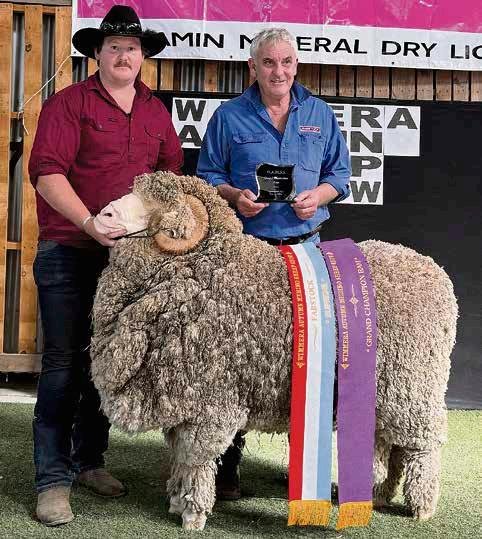
“The show comes with prestige and self-development for woolgrowers,” she said.
Danni Wilson of Tamaleuca Merino and Poll Merino Stud in Ouyen is a key organiser of the event.
She said the Wimmera Autumn Merino Sheep Show was a success and sheep numbers were up, with each stud bringing a few more sheep than
in 2023. “We had 24 sheep studs and lots of fleeces on show,” she said.
“Quality was good – it’s the first event in a series of shows, so it’s good for breeders to bring out the sheep for their first outing.
“We enjoy the Horsham facilities, it has good pens, beautiful buildings and is a good location for a show.”




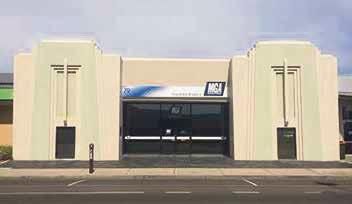


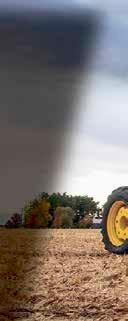


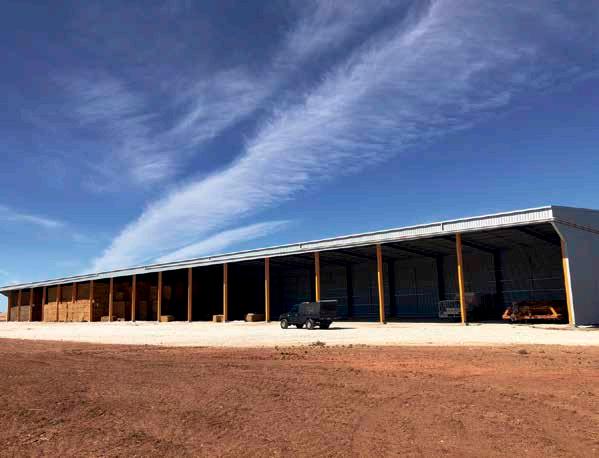

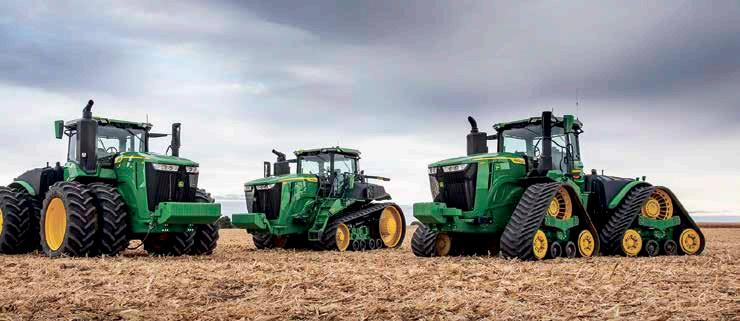

















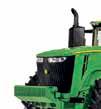
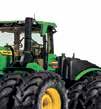



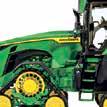




with big ticket items at the Wimmera Machinery Field Days this year was evidence supply and demand of machinery is almost back to balance after years of delays.
Emmetts Horsham sales representative James Gardner said supply of machinery was definitely improving.
He said the Emmetts site at the field days did not have many new machines, but John Deere was due to release more to Australia.
“In the next 12 months I expect we’ll see more machinery in yards at dealerships,” Mr Gardner said.
“Manufacturers are catching up now.”
Mr Gardner said the instant tax write-off scheme and low-interest rates pushed the increased demand in recent years.
“Now we have higher interest rates and no write-off, so farmers are holding onto their pennies a bit more,” he said.
“Things are still selling, most farmers still had a good year, but it’s not like it was.”
Mr Gardner said speaking to farmers he understood they had a reasonable year in the region, and while there were better yields in the northern areas, no one was upset by the season.
“There’s still money around. We had

a real uptake in the past two years for new machinery and now we expect we’re in a slow spot for the next couple of years,” he said.
“Also, inputs are costing more at the moment and with land value what it is, which means a lot of interest, some people are putting money into land, which possibly offsets what they spend on machines.”
Goldacres’ marketing manager Stephen Richards said with machinery made in Australia, the supply of stock continued to get better.
“In the past three years we have been order takers more than anything and haven’t been selling as much because it’s been so busy,” he said.
“In 2020 it was dry, particularly in NSW, and then it started raining and


it didn’t stop, so orders kept rolling in throughout COVID and it’s been some of the best years we’ve had.”
Mr Richards said the business had a slow start to the year, but was building momentum now.
“We built a lot of orders in the leadup to Christmas to start the year fresh and it probably took about a month for it to fire up again, but we’re seeing
a lot more orders now,” he said. “It’s shaping up to be quite a good year, but you never really know – we haven’t had rain for about a month, but it will rain again and weeds will grow.”
Mr Richards said the field days were a chance to showcase the big range of products Goldacres had to offer, particularly regarding spraying.
“We showed the new G4 series two, our latest edition with a new engine, new transmission, all the updates and green-on-green camera technology to detect weeds in crop,” he said.
TractionAg sales team member Steve Graetz said access to machinery had improved greatly in comparison to recent years.
“While there was greater demand, it has steadied because of the tax incentive and with interest rates moving,” he said.
Mr Graetz said a tremendous amount of equipment was upgraded and improved in the same period of time.
“It’s amazing how much can change in two to three years,” he said.
“On the field days site, we had new technology on show with our fullyautonomous Fendt with its cameras and emergency stop functions – you can set it and it goes.
“Anything we had on-site in terms of spreaders was already sold – everything has its season and people’s minds are on spreading and cropping at the moment.”

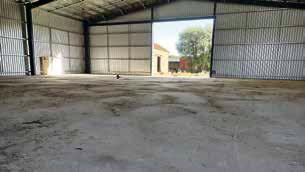

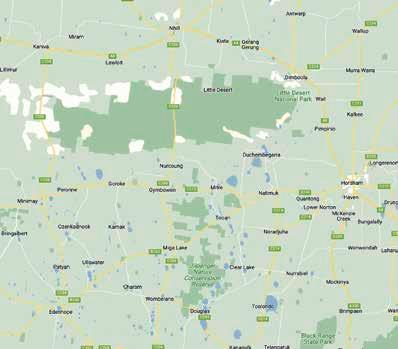



The all new Fendt Rogator 900 series with WEED-IT designed and installed
Australia has impressed farmers across the Wimmera. With its debut and first
demonstration at the recent Traction Ag Drive Day, and then displays at WMFD, Lucindale Field Days and a special demonstration on-farm at Rupanyup, Traction Ag is showcasing what this unit is capable of and how much you can save by using Weed-it! With Fendt Rogator fitted with WEED-IT, Two is better than one. Unlock Spot and Blanket PWM Spraying with WEED-IT.
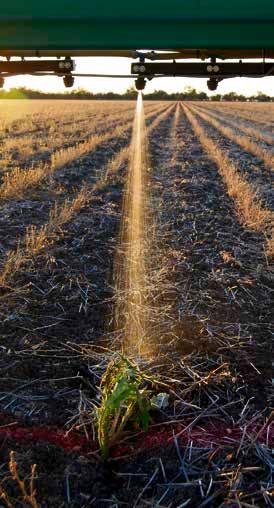
Rometron Australia was established with a mission of bringing WEED-IT sensors to farmers fitted on the best boom sprays for our unique farming landscapes. Now proudly partnering with Traction Ag bringing retrofit options to Wimmera farmers.
25cm Nozzle Spacing
Tall weeds head to foot coverage
Reduced stubble shading
Twice the detection & twice the savings of 50cm spacing
Automatic Background Calibration & Exceptional Monitoring
Peace of mind operation
User friendly
Simple to operate
ISOBUS Compatability
Interface with multiple controllers
Automatic boom section control
Weed mapping capabilties
Prescription / coverage maps upload and application
Talk to the sales team at Traction AG to see what
Rometron could do for your farming program
PWM
Constant rate with varying speed
Corner compensation
Light Weight
Easyfitout
Less weight on boom 1 sensor per metre
750 g per metre
Smart Power Management
PSU conversion 12v - 48v 4 times less current
Lighter wiring
Reduced power loss
Current draw on tractor approx. 2.2 amp/m

Anewly-released Rabobank research report revealed Australia’s grain growers are looking at improved prospects in the season ahead, with 2024-25 gross margins set to increase on the back of lower cost of production.
The agribusiness bank says with the cost of fertiliser and agrochemicals potentially down as much as 20 per cent, while grain prices are forecast to ease just six per cent on average, the upcoming Australian winter crop is shaping up to have a much better outlook than the previous season.
The report, Australia’s winter crop gross margins, forecasts 2024-25 average gross margins for wheat, barley and canola will still lag on seven-year averages.
The report forecasts average Australian wheat gross margins to come in about 34 per cent, barley at 33 per cent and canola at 26 per cent.
The margins compare with averages for the period of 43 per cent, 41 per cent and 45 per cent respectively, according to the bank’s modelling.
Report author, RaboResearch grain and oilseeds analyst Vitor Pistoia said gross margins could also be understood as a business’s capacity to generate cash.
He said, in that sense, 2024-25 should see a rebuild close to historical levels as the previous season was impacted by substantial grain and
oilseed price reductions and relatively elevated farm input prices.
“The seeding period for the 2024-25 season is about to start and growers are making the final decisions on what to plant and how to optimise crop rotation,” he said.
“The commodity price forecast as well as the expected cost of farm inputs are considerably different from the previous seasons, which has altered the profitability scenario for the upcoming winter cropping season.”
Mr Pistoia said the improved outlook remained weather dependent.
The report says wheat is set to be Australia’s ‘breadwinner’ for the season with a projected gross margin of $281 a hectare compared with an average of $158 a hectare last season.
It also shows prices were set to be compensated by a predicted larger reduction in the variable costs of fertiliser and agrochemicals.
“The $281 a hectare gross margin forecast situates wheat as potentially the most profitable of the three major crops for 2024, together with barley,” Mr Pistoia said.
“Also, due to the lowest variable cost, wheat might expand its area over other crops, especially canola.”
Rabobank predicts about 12 million hectares of wheat will be planted.
Mr Pistoia said wheat was the only crop to have achieved above-average
gross margins in four of the past seven seasons.
“In the 2023-24 season, wheat was cropped on 12.5 million hectares or 55 per cent of the winter crop area,” he said.
“Its total revenue was only exceeded by beef, and Australia is the fifth largest exporter of wheat globally.”
The bank estimates malting barley margins to come in at about $282 a hectare up from an average of $225 a hectare in 2023-24.
“In combination with the benefits of barley at paddock level, such as weed control and optimising fieldwork schedules, this sees barley as a strong and reliable crop choice for Australian farmers,” Mr Pistoia said.
Rabobank expects the 2024-25 Australian planted barley area to remain greater than four million hectares.
Mr Pistoia said China’s import tariff on barley scrapped in August impacted grower margins substantially.
“Australian farmers’ response came in the form of area reduction – in this period, area planted to barley was reduced by roughly 1.3 million hectares or a 25 percent reduction,” he said.
The bank forecasts average Australian gross margins for canola about $251 a hectare in 2024-25 up from last season’s average $158 a hectare gross margin.
Mr Pistoia said an area of about three million hectares was expected for the 2024-25 season.
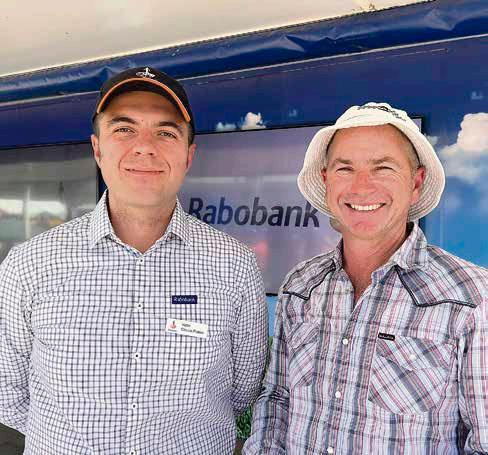
SHARING KNOWLEDGE: Rabobank’s Vitor Pistoia, with Jason Robinson, of Warracknabeal at the Rabobank Truck during the Wimmera Machinery Field Days.
Rabobank’s Horsham team hosted clients and guests at the RaboTruck at the 2024 Wimmera Machinery Field Days.
The RaboTruck is a multipurpose vehicle designed for sharing knowledge, building networks and supporting community.
Rabobank agricultural analyst Vitor Pistoia spoke with visitors about the outlook for Australian agricultural
commodities. Bethan Wearmouth, from Rabobank’s fraud detection and response team, shared knowledge on cybercrime scams and fraud risk.
The Horsham branch of Riding for the Disabled, led by Jan Croser, served coffee from the RaboTruck during the field days to raise awareness and funds for the work undertaken by the association.
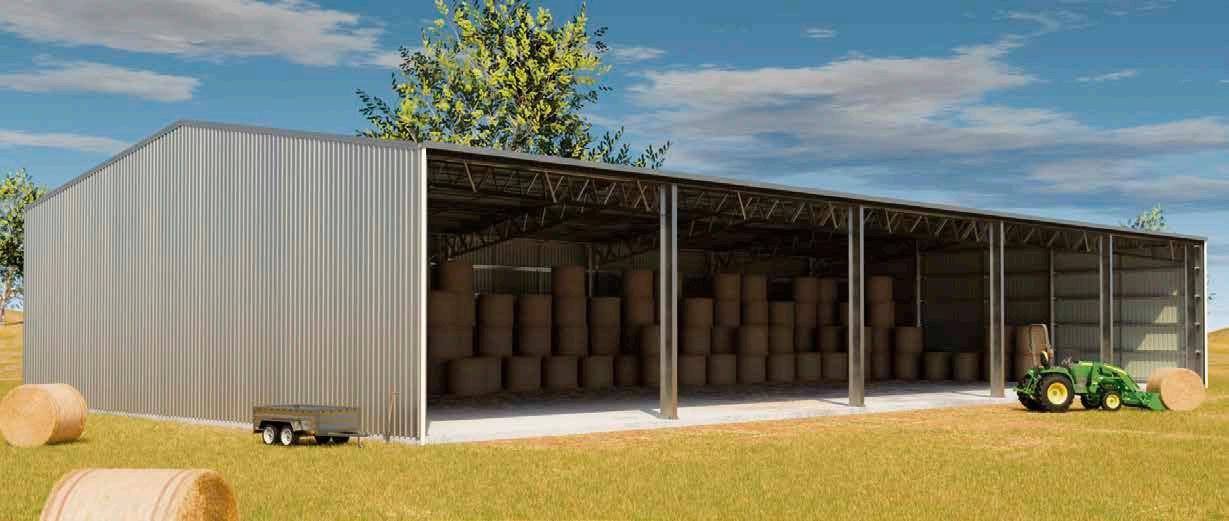

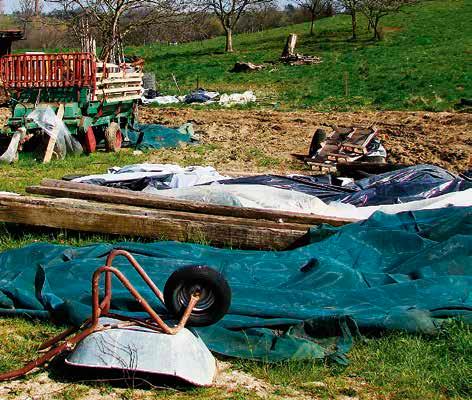
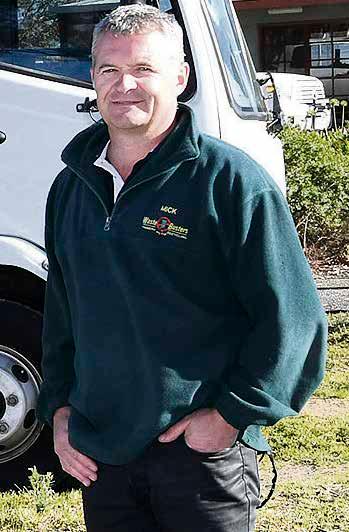
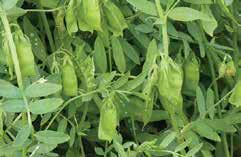

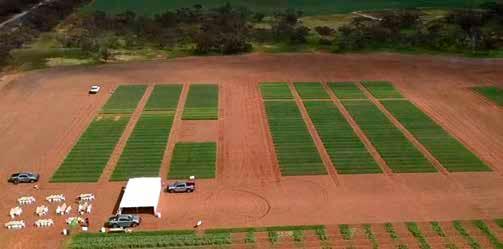

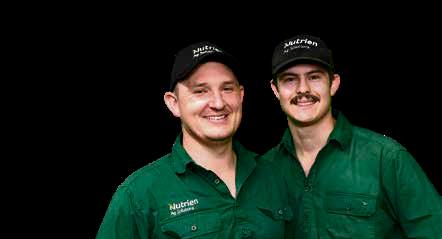
Simply put, there is no ‘best wheat variety’ available to all farmers. However, selecting a wheat variety for your farm involves considering various factors beyond just maximising yield. While yield is undoubtedly crucial, other considerations that can impact your farm’s bottom line both now and into the future.
In recent years, breeding and variety choices have often prioritized maximising yield, but there are other factors to consider. A relevant issue is disease resistance, particularly over the past few seasons with bad rust outbreaks.
What if you’re a mixed farmer, you might need a variety that can handle early grazing to fill the winter feed gap. Alternatively, if your area frequently experiences wet conditions, will your paddocks
be trafficable to ensure timely fungicide application?. What if you are targeting a certain grade of wheat, for example Hard or APW grades.
Additionally, herbicide tolerance, coleoptile length for deep sowing, or season length to avoid frost might also be critical factors in your decision-making process.
With the abundance of wheat varieties available, each with its own strengths and weaknesses, there’s no one-size-fits-all solution. It’s essential to consider these traits and how they relate to your farming operation.
While yield remains a vital consideration, it’s important to recognize that yield isn’t isolated from other factors. It’s part of an integrated system influenced by various considerations, and effective management practices are key to maximizing the
potential of any chosen variety.
Ultimately, the best wheat variety for your farm is the one that aligns with your specific requirements and management practices. While yield potential is significant, a variety that is well-suited to your situation will ultimately outperform one with higher yield potential that doesn’t meet your farm’s needs.
As always, feel free to contact Jack or Charlie anytime!

One of the best things I’ve done in my life is to move to the country.
I’ve been living in northeast Victoria for a decade. Luckily, I bought into the property market at just the right time.
In fact, I think we might be going through a golden era of rural land values.
According to ABARES, broadacre land values have increased by 130 percent in the past decade.
Talking real estate is a most popular pastime, so last week on Country Today I spoke to one of the big shots of rural property, Danny Thomas of real estate firm LAWD. He agrees with me – it just might be a golden era.
“It’s been the most extraordinary time,” he said. “This is reminiscent of something you would have seen many decades ago during the 1950s wool boom.”
For those, like me, who weren’t around to witness it, Australian merino wool was selling for a pound – as was the currency then – for a pound of wool.
Legend has it that a Western District wool grower made some modifications to his Rolls Royce and turned it into a farm ute.
Go back 25 years and the average broadacre price for land was about $1000 a hectare. It’s now nearly 10 times that.
King of the castle is cropping country and leading the pack in investing in farming are the institutional investors.
“It’s fascinating,” Mr Thomas said.
“We’re seeing the market institutionalise at a rapid rate… Those institutions have a relatively lower financial hurdle in terms of the money they achieve on a cash basis and
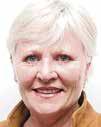
a total return over a very long investment horizon, so that’s materially changed the market.
“The other thing we’ve seen is a significant volume of institutional money come into the water market… That’s become a very attractive asset to invest in from people all over the world.
“There’s a lot more liquidity in rural lending than there used to be. And so you see considerably more debt to facilitate growth. There’s ability to finance inventory, which provides working capital efficiency, so there’s more money available today for livestock finance, crop finance and the like, and all of that contributes to the ability for farmers to grow their business quicker and get more scale and stay ahead of the cost price squeeze.”
Just as happened with livestock prices falling with the talk of an El Niño weather pattern, land values dropped late last year, some areas more than others.
“There are pockets in western Victoria where I think the adjustment might be more significant,” Mr Thomas said.
The final word from Mr Thomas: “If you’re thinking of selling, obviously consult with your local agent, and I’d be tempted to wait until the second half of the year.”
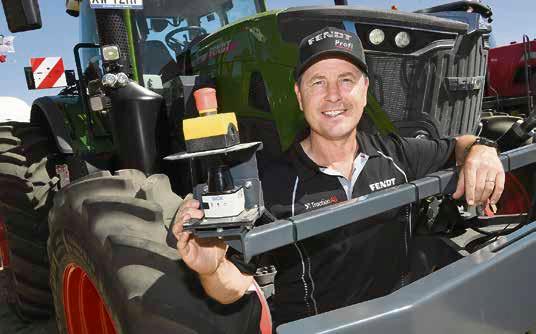
buy things, but now the dynamics have changed.”
Goldacres’ marketing manager
The
Emmett’s
James Gardner said Wednesday was the biggest day for crowds.
“People came to our site to say hello, so while there weren’t as many buyers, we now have a few leads and quotes to do,” he said.
“The field days are about relationships. It’s changing – people used to come with trailers and
Stephen Richards said the weather affected when people visited this year, with three days of 30 degrees or higher.
“The first day was good in the morning but it was hot in the afternoon. Wednesday was the better day and I reckon the weather had a lot to do with that, and then Thursday was consistent,” he said.
“Inquiries were as we’d expected.
“It’s a chance for customers to talk to us directly rather than talking to a dealer.”
Member of the TractionAg sales

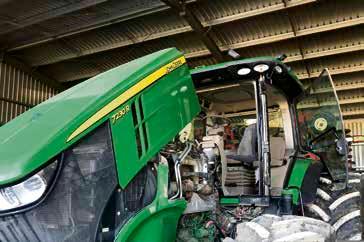
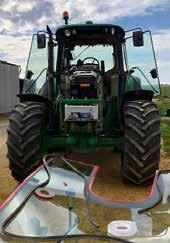
team Steve Graetz said there was a steady flow of people through the gates and across the sites.
“It was our biggest site to date,” he said.
“We had all the big stuff such as our self-propelled sprayers – we have three large ones which have only hit the country in the past few months.
“We also had our new autonomous tractor on site and a drone that can spray paddocks.”
Mr Graetz said inquiries at the field days were genuine.
“This is the only chance for people to go from one dealer to another in the same place in one day, so that’s a positive for them,” he said.






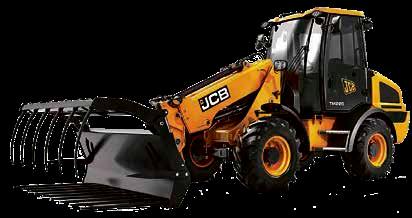
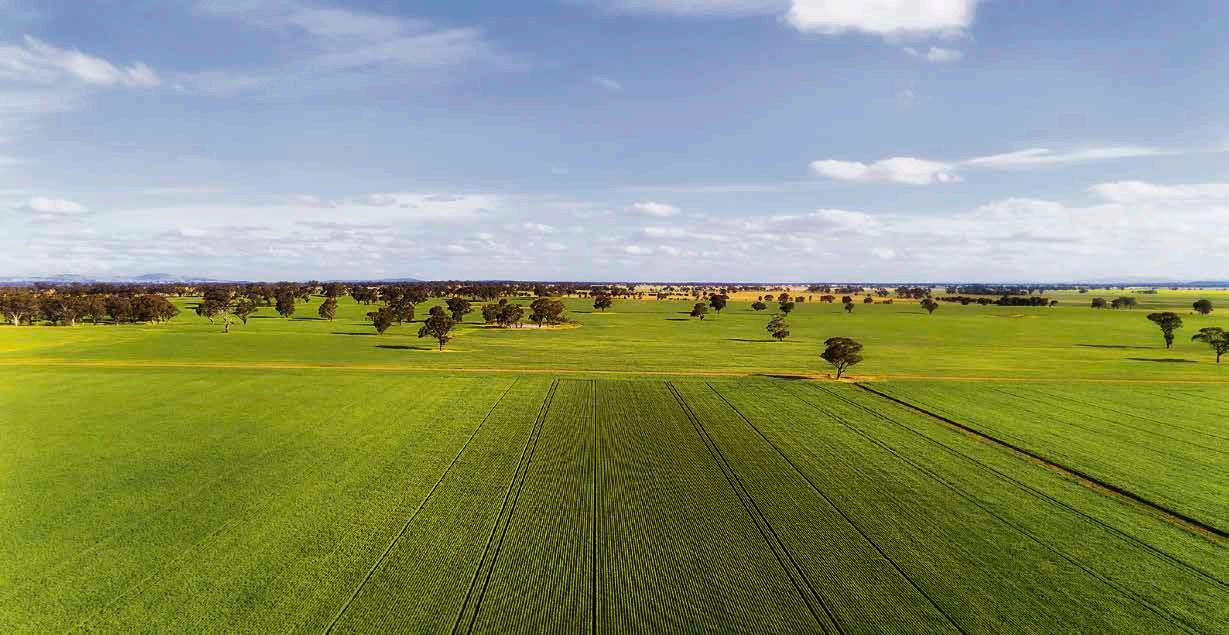
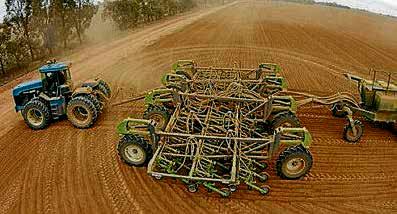



Itwas tough competition for site award judges at the Wimmera Machinery Field Days this year.
Fossey’s Distillery won best Country Lifestyle site, Agrimac won best agriculture machinery outdoor site, Before You Dig Australia and Energy
Safe Victoria won best Moore Exhibition Centre site, Horsham Lawnmower Centre won best general outdoor site, John Shearer won machine of the year with the MK 4 Seeder bar, and SheerSpeed won agriculture business innovation of the year for its Woolmaster handpiece and counter.
SheerSpeed owner Steve Hein won the award in his first Wimmera field days.
“For the past 110 years shearers had to pull a cord, but now all you do is press a button and away the handpiece goes,” he said.
“It’s connected to a counter to tell you how many sheep you have shorn.
“It works on a radio wave so it’s only on-off, same as a TV remote.
“The transmitter talks to a receiver, which talks to the overhead motor.”
Mr Hein said it was safer and more efficient.
“If you have someone, for example, doing a 150 run and there’s 150 on the counter, it’s 150 you don’t have to count out,” he said.
“With crutching, a lot do 600 a day, so, in an eight-hour day you have
to pull the cord 1200 times for four seconds. It amounts to 40 minutes and when you take into account time to push the button, it’s about an extra 40 a day.
“If it falls over, nothing will get broken. If it gets kicked out of your hand you can still pull the cord to stop and start it.
“You’ve also always got control of the sheep with one arm, whereas before to pull the cord you had to let go of the sheep.
“If you get out of position or anything goes wrong, you can switch it off straight away.
“When I was learning to sheer I cut into my finger and hand down to the bone, which put me out of action for the rest of the year, but if I had the cordless it wouldn’t have happened.
“I got out of position, I couldn’t reach the cord so I tried to keep shearing and the handpiece went into my hand. I’ve still got the scar – it happened 40 years ago.”
Mr Hein said as a retired shearer and after his son began managing his farm, he had a lot of time to think.
“I sat in my armchair in 2017 and came up with all these ideas within three months,” he said.
“A lot of this was in my mind anyway because I used to be a shearer, but I did nothing because I had a young family, I didn’t have the money and I didn’t have the patience.
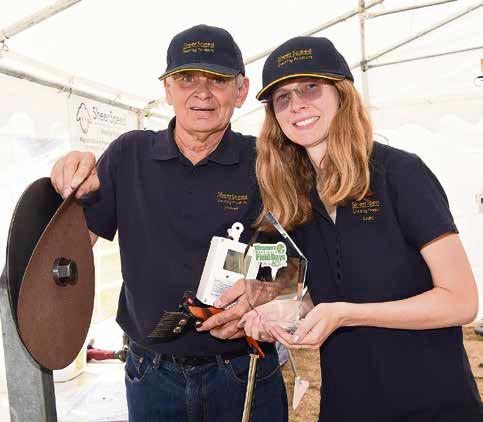
“Another invention, magnetic grinding papers, took about five years to get them right because I’m pretty fussy, so they’re made to my standard and they had to be good.”
Mr Hein said previously grinding papers to make combs and cutters sharp had to be glued to discs, but he had created magnetic papers to stick to steel discs.



“You put the magnetic papers on in 30 seconds, whereas normally to glue a paper on it takes about two hours of messing around,” he said.
“With its safety washer, you can grind right up to it without fear of hitting the nut and the comb flying in your face and you utilise the full width of your paper, which means you’re going to get a good cut on your comb
and cutter. They’re factory made so the glue is rock hard, and it won’t get bubbles or come off – it’s better than the glue for other papers because we don’t have to worry about getting it off the disc when it’s time to put a new paper on.
“It’s centrifugal force, the nut and magnetism that keeps them on the disc.”
Fossey’s Distillery owner Eddie Timmis said 2024 was the first time the business had a stall at the Wimmera Machinery Field Days.
“We have enjoyed it, and we will be coming back again,” she said.
“We were happy to win the award – we were meeting people, and we were set up on the corner so it was a great spot. The field days have a great set-up.”
Agrimac sales manager Horsham Justin Beugelaar said the award was a reward for the staff’s effort.
“Last year everything we displayed belonged to customers already, so our stock is slowly catching up and we were happy with everything on our full site,” he said.
“Crowds were steady, which was good, and we had good conversations.
“The field days gives us the ability to show current and new customers the broad range and it’s great to have everything here.”
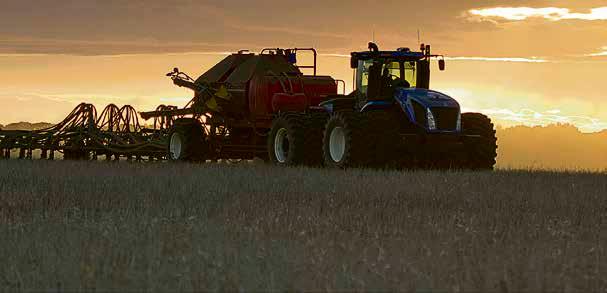
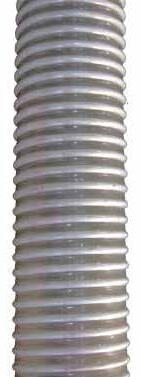
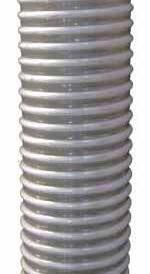

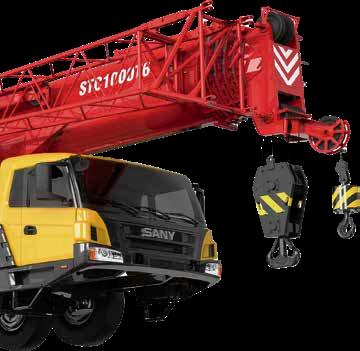
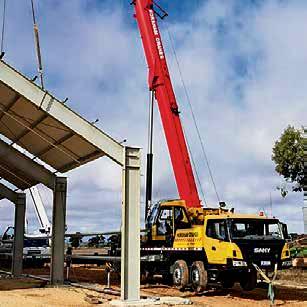
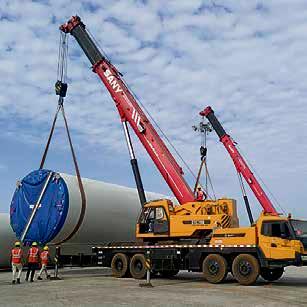
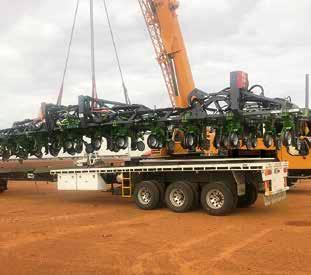
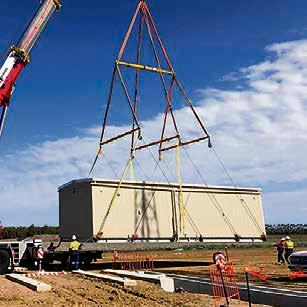

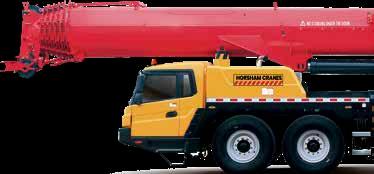
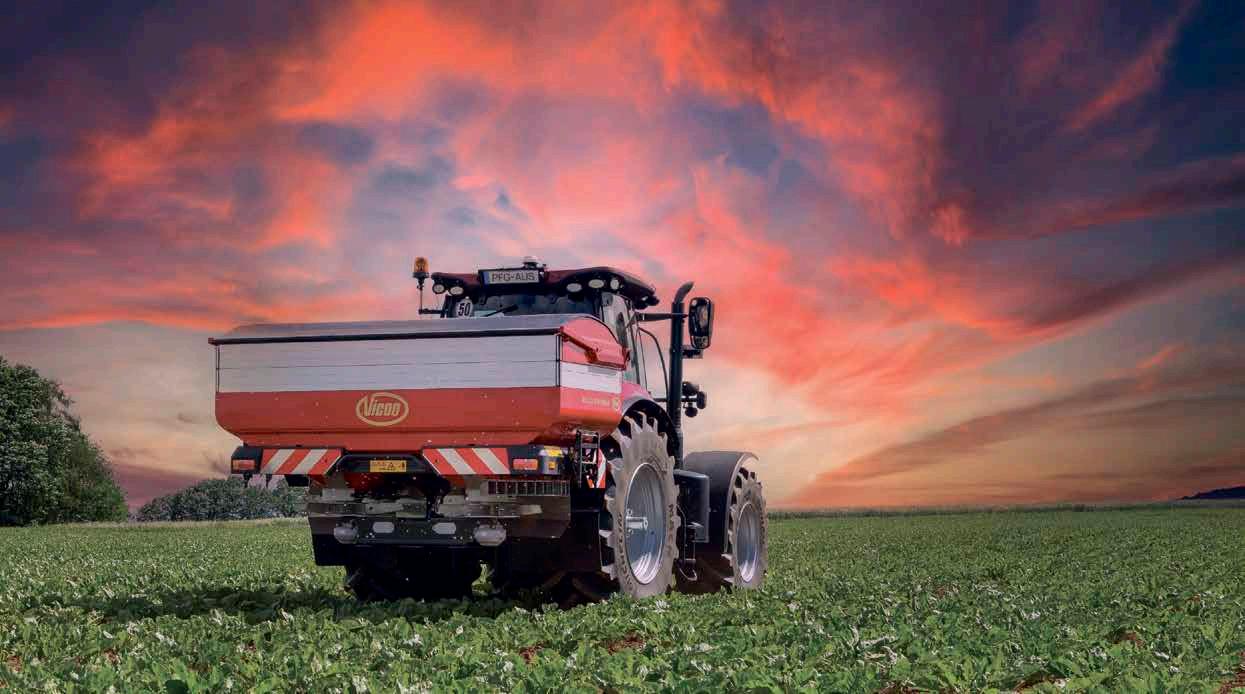



fter three years of consecutive growth, the Australian sheep flock is set to decrease by 2.9 per cent to 76.5 million in 2024, the latest sheep industry projections from Meat and Livestock Australia, MLA, shows.
During the 2020-2022 rebuild phase, producer focus on productivity and genetics led to impressive marking rates across the sheep flock.
However, the shift from beneficial weather conditions to average conditions in 2023 led to an elevated turnoff of unproductive breeding stock, resulting in a 46.7 per cent lift in sheep slaughter.
MLA market information manager Stephen Bignell said as sheep turnoff would mostly be limited to older, unproductive ewes, this year’s lamb cohort was expected to remain solid, but slightly smaller, than previous years.
“The current resilience of the sheep flock means that high lamb slaughter will have a less intense impact on the national flock size than in previous maintenance periods,” he said.
“This means there will be a decrease in overall flock numbers, but not as dramatic as in comparative years.
“After 2024, the flock is expected to stabilise and remain above the 10-year average.”
Slaughter and production are projected to peak in 2024, causing a record supply of Australian sheep meat into the global market.
Australia produced the most lamb on record in 2023, with 599,461 tonnes of lamb being produced, 11.6 per cent more than in 2022, which was another record year.
Mr Bignell said economic resilience in the United States and emerging markets would drive demand for lamb, while the outlook for consumer demand in China remained uncertain.
“Regardless, a shortage of competitor proteins will encourage imports of sheep meat in high protein consumption markets,” he said.
It is projected lamb production will reach 621,000 tonnes in 2024, a nine per cent or 54,000-tonne increase compared with 2023.
If this eventuates, it will be 21.3 per cent or 109,359 tonnes more than the 10-year average.
Next year, the lamb production forecast is set to ease to 587,000 tonnes and then rise in 2026 by 19,000 tonnes to 606,000 tonnes due to improved carcase weights.
Mutton production will be the largest since 2006, set to produce 254,000 tonnes in 2024 up by 3.14 per cent on 2023 volumes.
Production will remain elevated in 2024 due to a small lift to slaughter.
In 2025, fewer breeding ewes will be turned off. The forecasts for 2025 and 2026 will reach 229,000 and 207,000 tonnes respectively, as the industry moves towards a transitional period where production will stabilise as the industry enters an average season.
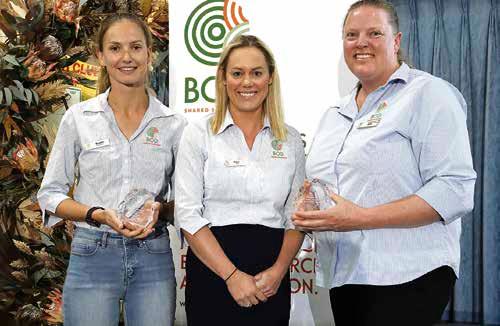
COMMITMENT:
Birchip Cropping Group chief executive Fiona Best, centre, recognises the five years of service from Brooke Bennett, left, and 10 years of service from Kelly Angel at the organisation’s trials review day.
Understanding climate indicators was a key message from Birchip Cropping Group’s climate expert Kate Finger at the organisation’s trials review day.
The senior researcher explained to more than 170 farmers and advisers last month an El Niño, as happened last year, did not always equal drought.
“It is important farmers understand that while there is increased risk, it does not mean it will eventuate,” she said.
“We want farmers to be aware of the increased likelihood to capitalise on opportunities and have a plan.”
Dr Yolanda Plowman hosted a discussion regarding biostimu-
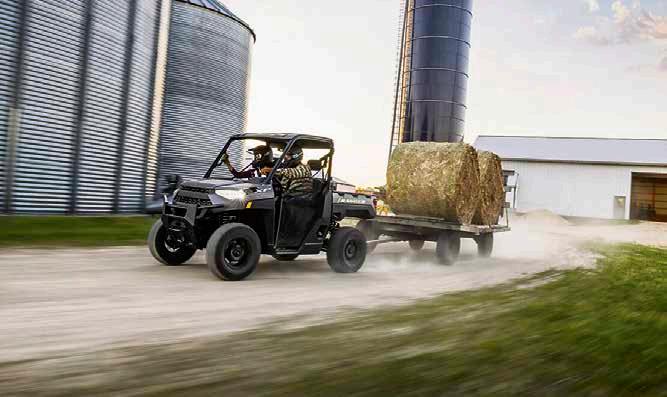
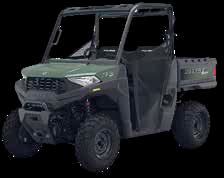
lants. Dr Plowman urged farmers and advisers to be mindful of biostimulants due to lack of regulation, claims versus evidence questions, lack of independent research, and research that showed some products might introduce harmful microbes into paddocks.
“Make sure the products you wish to use are backed by good science, and remember, it is an industry worth billions of dollars which is currently unregulated in Australia,” she said.
Dr Michael Nash spoke about snail and slug management as growers grapple with a sharp increase in numbers and subsequent damage caused by slugs,
and contamination due to snails. Chief executive Fiona Best recognised the service of Brooke Bennett and Kelly Angel for five and 10 years, respectively, to the organisation. Other topics included farmer and adviser experiences, protein mapping, Birchip Cropping Group research, grid sampling at a paddock scale, silicon in wheat and lentils, long coleoptile for moisture management, crop disease research, insects in harvest weed seed control systems, vetch for risk mitigation in dry times, pulse update, Septoria and cereal disease update, and latest cereal varieties.

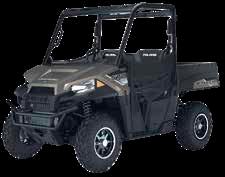
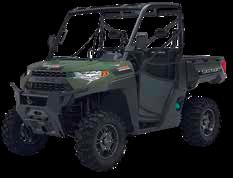

The Commonwealth Scientific and Industrial Research Organisation, CSIRO, has achieved a breakthrough in breeding disease-resistant crops.
CSIRO chief research scientist Peter Dodds is co-lead of a project using new technology that will impact future pathogen-resistant crop development.
Dr Dodds said the main focus of the project was wheat and rust disease.
“What we’ve found is a new way to identify how plant diseases can respond and escape immunity that’s bred into plant varieties,” he said.
“This is something that has been a real challenge for plant breeding and crop growing for a long time.
“Plant pathogens evolve quickly and acquire new immunity at a rapid rate.”
Dr Dodds said the technology was based on advanced techniques and used complicated machines.
“Essentially what we’re doing is we’re taking a leaf from wheat, pulling out all the cells individually, putting them in a test tube and then we take
all of the genes from the rust we’re interested in, and we throw them into those cells,” he said.
“We look for a response that is specific to particular resistant varieties or particular rust strains. That’s all done, not under a microscope, but with some quite complicated machinery.”
Large scale
Dr Dodds said the project was a huge change in combating crop diseases.
“Everything previously was always done on a one-at-atime basis, so there was no way to do this at scale,” he said.
“But here we can take all the genomes of a pathogen and screen them all at once and immediately find the things we are looking for.
“It’s a huge advance in the scale and speed at which we can do things.
“We think the most immediate application is that we can improve the way we detect and monitor these pathogens, so we know what strains are around and what varieties they’re likely to cause disease on.
“Farmers will have that in-
formation available and be able to make better decisions about what varieties they grow and what control measures they need to put in place if there is disease around.”
Dr Dodds said the technology would apply to different crops and many diseases.
“Our focus has been on wheat and rust diseases because wheat is the biggest crop in Australia and rust is one of the most important diseases, but there are many other important crops and important diseases of those crops, too,” he said.
“I think the techniques we have developed in wheat rust are going to be widely applicable to other diseases.
“The breeding process is not a rapid one and it takes a while to bring new varieties to market, but this accelerates the ability to bring in important and effective resistance and also screen which sources of resistance are going to be most durable.
“It can go straight into crops that are in breeding lines at the moment and help to prioritise which are the best lines to try and bring forward.”



STORIES SHARED:
Shelley Green, of Ararat, and Robyn Lardner, of Horsham, presented their ‘Life and Times’ stories at the Women on Farms Gathering at Ararat earlier this month.
About 80 women from across the state and interstate attended the 34th annual Women on Farms Gathering at Ararat on March 15 to 17. Event organiser Christine Rippon, who has been involved with the gatherings for more than two decades, expressed satisfaction at the turnout.
Attendees also provided glowing feedback on the event’s success.
“Listening to local presenters deliver their ‘Life and Times’ stories was fantastic, and in such a relaxed and welcoming atmosphere really made the event for all who attended,” Ms Rippon said.
Other guest speakers included Tatyoon filmmaker Leila McDougall, former Great Western egg farmer Shelley Green, Nancy Panter who owns wine label SubRosa, and Ararat deputy
mayor Jo Armstrong, who shared their experiences of life on the land.
“The Women on Farms Gathering in Ararat stands as a testament to the resilience, camaraderie, and spirit of rural women, leaving a lasting impact on both attendees and the host community,” Cr Armstrong said.
The three-day event at Ararat RSL offered participants the opportunity to explore cafes, tourist attractions, and a visit to JWard.
With the majority of attendees from outside the region, Ararat’s accommodation, hospitality, tourism and retail sectors all experienced boosts, with many participants indicating a likelihood of return visits to the region.
In support for fire-affected communities, the event raised $2000 to show its commitment to the broader rural community.
